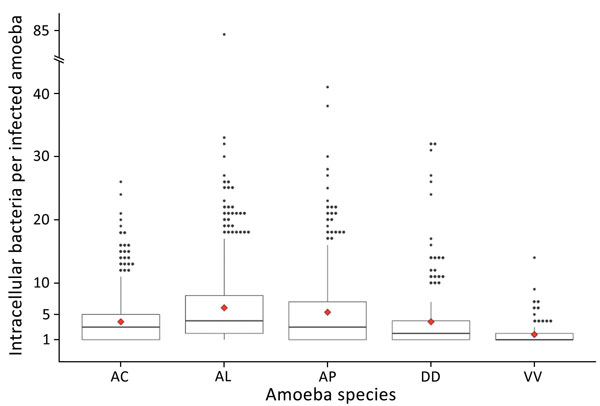Volume 24, Number 2—February 2018
Research
Yersinia pestis Survival and Replication in Potential Ameba Reservoir
Figure 3

Figure 3. Boxplots of infection intensity across ameba species after experimental infection with Yersinia pestis. Infection intensity frequencies followed a strong negative binomial distribution. Median infection intensities (horizontal lines inside boxes): AC = 3, AL = 4, AP = 3, DD = 2, VV = 1. Red diamonds denote mean infection intensity (Table). Each ameba species had several high-intensity outliers ranging up to a maximum of 84 intracellular bacteria observed in 1 A. lenticulata ameba (note broken y-axis). AC, Acanthamoeba castellanii (n = 1,441); AL, A. lenticulata (n = 1,156); AP, A. polyphaga (n = 737); DD, Dictyostelium discoideum (n = 624); VV, Vermamoeba vermiformis (n = 528).
Page created: January 17, 2018
Page updated: January 17, 2018
Page reviewed: January 17, 2018
The conclusions, findings, and opinions expressed by authors contributing to this journal do not necessarily reflect the official position of the U.S. Department of Health and Human Services, the Public Health Service, the Centers for Disease Control and Prevention, or the authors' affiliated institutions. Use of trade names is for identification only and does not imply endorsement by any of the groups named above.